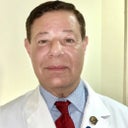Photos cannot replace an in-person consultation during which the physician has the opportunity not only to examine the facial contours in various lightings and positions, but has the ability to directly palpate the skin. That being said, I think a few general comments are in order. There does appear to be some mild flattening of cheeks in the cheekbone regions, as well as suggestion of volume depletion in the upper inner and submalar cheek regions. Volumizing fillers, such as Voluma XC and Radiesse, which I would use in my Upper East Side Manhattan office (and Stylage XXL and Hyaluronica 2, my go to agents for these problems in my Israel satellite facility, where a far greater number of regulatory agency approved volumizers are available) in my experience would address these issues, typically yielding immediate and gratifying results that may last up to two years. Being natural injectables, these agents would also make a good starting approach for a relatively young person. As to energy devices, I think the following can be quite instructive. In a recent July/August issue of Modern Aesthetics (a trade journal), the editors in their "Editor's Message" column wrote the following: "Devices in many categories--lasers, light sources, ultrasound, radiofrequency, and combinations of those--are now...widely available at both physician offices and non-physician spas. Patients hear about them from the media and ask for them by name. Unfortunately, the results don't always keep up with the hype." The foregoing echoes my personal experience. Finally, as to autologous fat grafting, the following was written in the January, 2015 issue of The Dermatologist (another trade journal): "The use of autologous fat is controversial. Augtologous fat transfer is a multistep procedure, and each step has been debated over the years. The most debated aspect is graft resorption. One study evaluating mid-face volume augmentation with fat transfer showed that 32% of the initial volume injected remained at approximately 1.5 years." In still another article in the January/February issue of Surgical Aesthetics, the author wrote, "With fat transfer, it's a free graft, so there's always going to be less predictability. You'll read about 85% or 90% take, that's wildly optimistic. In order for blood vessels to grow into it, the graft has to be immobilized. the patient is going to smile and laugh and talk and that fat graft is going to move. As it moves, it's going to disrupt the blood supply that's trying to grow to it, so you're going to have less predictability." The process is also relatively expensive, and for all these reasons I personally stopped performing fat tranfer back in 1994, and certainly find it less justifiable when we have an ever-growing selection of natural volumizing injectables, such as those mentioned above. Best to consult with a board certified aesthetic physician who will help you to tailor a treatment plan appropriate to your age, goals and budget.


